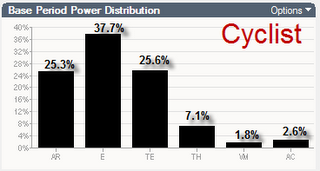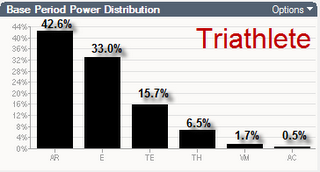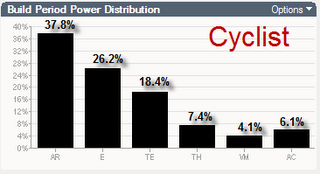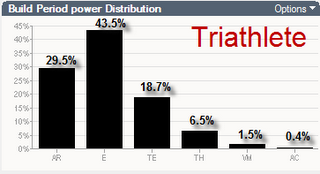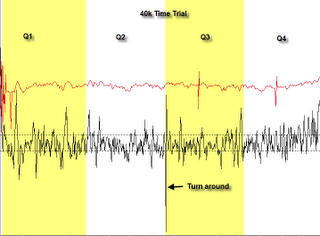TT Pacing Research
One of my peculiar habits is that almost every day I read from a stack of research abstracts looking for interesting stuff that I might be able to use in training. This morning I found one on a topic near and dear to my heart. I’m sure you can guess what it is: Pacing in cycling time trials. This research would also apply to the bike leg in a triathlon, I believe.
In this study Mattern and colleagues at the University of New Hampshire examined the effect of different pacing strategies in the first 4 minutes of a 20km time trial (Mattern, et al. 2001. Impact of Starting Strategy on Cycling Performance. Int J Sports Med 22(5): 350-5). The 13 subjects were experienced and competitive road cyclists (average VO2max was 71.7). They did three time trials at this distance over several days. The first was done at a self-selected pace for the first 4 minutes and for the remaining times. We’ll call this self-selected trial ‘SS.’
A few days later the same riders repeated the 20km TT. And a few days after that they rode the third one. On these latter two occasions they were told to ride for the first 4 minutes at a power output that was either 15% less than in SS (‘-15’) or 15% greater (‘+15’). These two were done in random order. In both instances after the first 4 minutes they could ride at whatever power and effort they wanted trying to produce the fastest times possible.
On average, the fastest times came from the -15 trial. Power was significantly higher after the first 4 minutes in this trial compared with SS and +15. There were no differences after the first 4 minutes between the 3 trials in terms of heart rates or ratings of perceived exertion. Everbody still suffered later in each of the trials, but in -15 the suffering started later.
Is holding back 15% for 4 minutes the perfect strategy for you? Maybe. Maybe not. But the take-home message here is that you will probably have your best times by holding back a little early in the race.
Although this study did not address the start strategy for running events, I expect the results would be similar for age grouper runners in a mass start race. That may not be the case for the elite runners in such a race due to the need to factor in drafting into the wind (they’re moving pretty fast) and the pacing strategies of the other elites.
The -15 trial is basically the strategy I strongly suggest to the athletes I coach. I’ve found that the only way to get them to do this in a race is to repeatedly rehearse it in training with graphic feedback so they know how they did. Even then it can be very difficult to hold back the first few minutes of competition. Patience and confidence are the keys. If you are impatient or lack confidence in your ability the tendency is to start much too fast (+15% or even more) and then limp home the final fourth of the race. I’m afraid this is what nearly all athletes do.
Realize that you can go too slowly at first, also. The best way to get your start pace figured out is to to try it several times in training and in races. The latter is the more important. Give the -15%-for-4-minutes strategy a try in your next B- or C-priority race and let me know how it worked for you.
